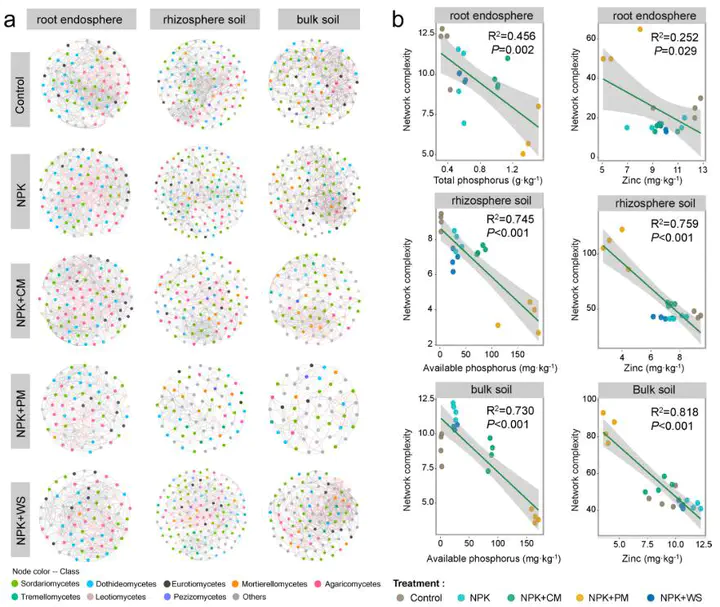Phosphorus and Zinc Are Strongly Associated with Belowground Fungal Communities in Wheat Field under Long-Term Fertilization

Abstract
Belowground fungi are closely related to crop growth, and agricultural fertilization is widely known to affect soil fungal communities. Yet it remains unclear whether fungal communities in differing belowground habitats—root endosphere, rhizosphere soil, and bulk soil—respond differently to long-term fertilization. Here we investigated the vari- ation in fungal communities of root endosphere, rhizosphere soil, and bulk soil under 35 years of fertilization in wheat fields. Specifically, the fertilization regimes were applied as five treatments, soils receiving NPK fertilizer, NPK and cow manure (NPK1CM), NPK and pig manure (NPK1PM), NPK and wheat straw (NPK1WS), and no fertilizer (Control). Long-term fertilization significantly impacted fungal community composition in all three habitats, and these effects were stronger in the rhizosphere and bulk soils than root endosphere. Mantel test results showed that fungal community composition was signifi- cantly correlated with phosphorus and zinc contents. Further, fungal alpha diversity was lowest in the NPK1PM treatment and was negatively correlated with both phosphorus and zinc contents. Moreover, NPK1PM treatment had the lowest complexity of fungal co-occurrence network, and in general network complexity was significantly negatively correlated with the zinc and phosphorus contents. Taken together, these results suggest that long-term fertilization can impact fungal communities not only in soils but in root endosphere, and this is strongly associated with the contents of phosphorus and zinc there, a finding important for guiding fertilization management practices and supporting sustainable agriculture.